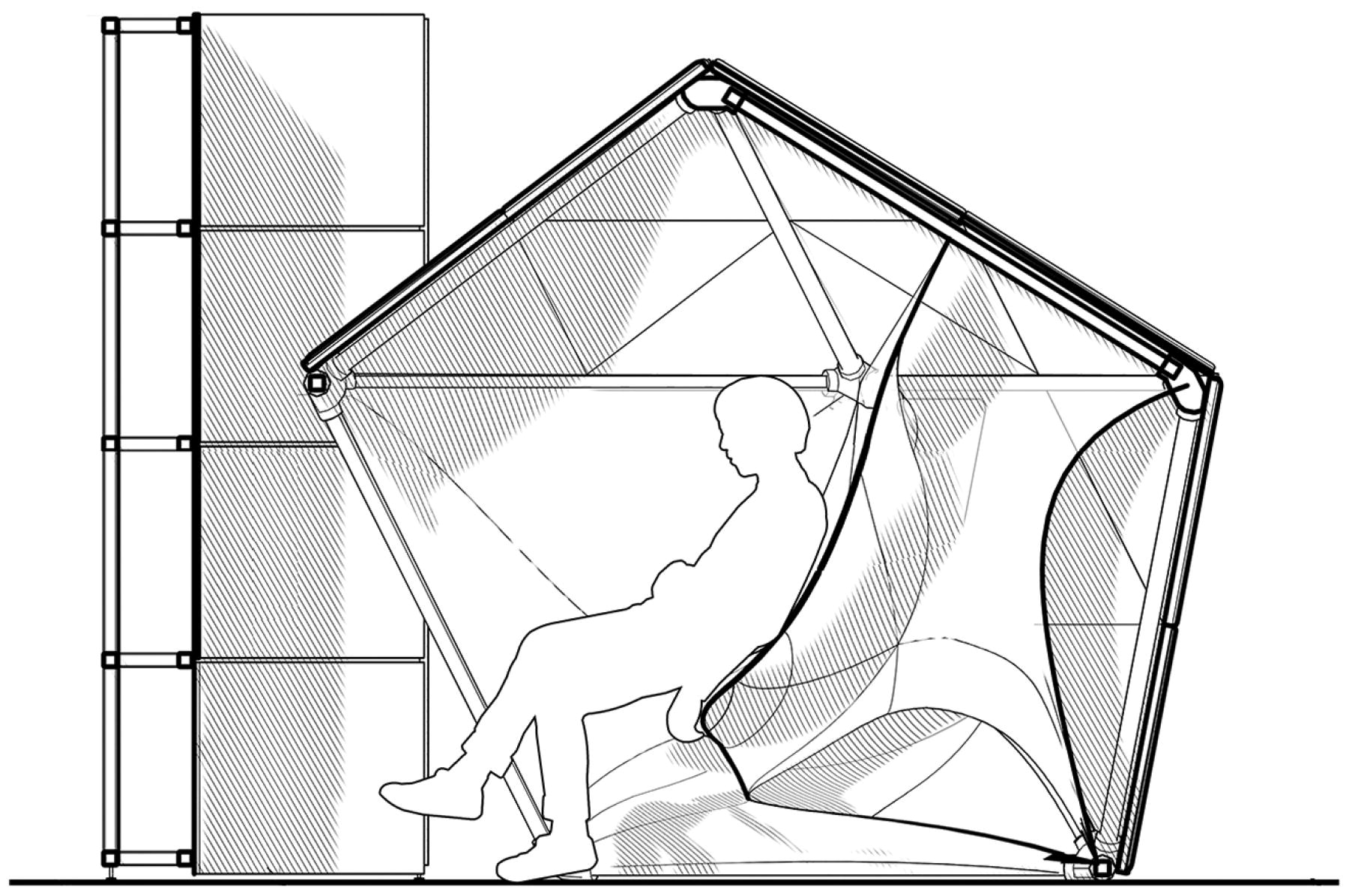Multisensory environments are believed to be helpful for neurodiverse individuals with sensory-processing issues (e.g., autism spectrum disorder or cerebral palsy). However, limited evidence is available about the effectiveness of multisensory environments or how to design multisensory environments for discrete sensory needs. This paper discusses the design, development, and assessment of a sensory cocoon that was part of a multisensory environment, named the sensory wellbeing hub, installed in a Chicago public high school for adolescents with developmental disabilities. The sensory cocoon is a freestanding microenvironment designed for visual and auditory separation and, through this project, the translation of design objectives into physical form to mitigate environmental elements was explored. This paper presents the technical design, detail development, and digital fabrication methods used to make a sensory-specific space through an iterative design research process.



